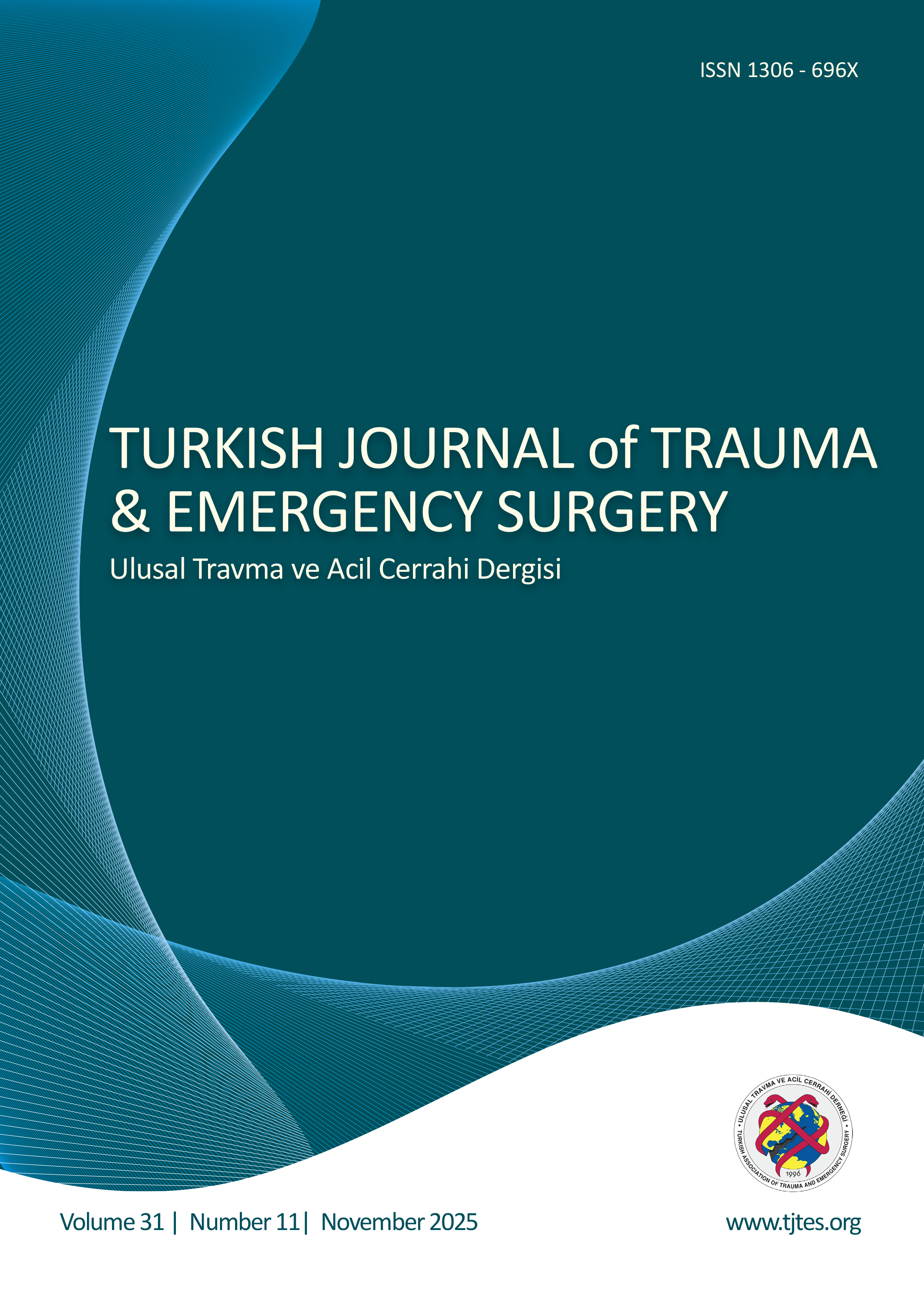Hızlı Arama
Antitrombotik tedavi alan hastalarda, acil gastrointestinal sistem cerrahisi güvenli midir?
Mehmet İlhan, Elchin Alizade, Görkem Uzunyolcu, Ali Fuat Kaan Gök, Kayihan Gunay, Cemalettin Ertekin, Mehmet Kurtoğluİstanbul Üniversitesi İstanbul Tıp Fakültesi, Genel Cerrahi Anabilim Dalı, İstanbulAMAÇ: Antirombotik (antiagregan ve antikoagülan) ilaç kullanımı tüm dünyada ve ülkemizde giderek artmaktadır. Gastrointestinal sistem tümör cerrahisi yapılan hastaların %12.6sı çeşitli sebeplerden antitrombotik tedavi almakta olup, bu çalışmada, elektif veya acil gastrointestinal tümör cerrahisinin doğru antitrombotik tedavi yönetimi ile güvenli bir şekilde uygulanabilirliğini göstermeyi hedefledik.
GEREÇ VE YÖNTEM: Gastrointestinal tümör cerrahisi planlanan, antitrombotik tedavi alan hastaların ameliyat öncesi tedavi yönetimi tedavisi kesilenler, köprüleme tedavisi uygulananlar ve tedavisi devam edenler olarak üç grupta incelendi. Tüm hastalara anti-embolik çorap ya da intermitan pnömotik kompresyon cihazı mekanik profilaksi olarak ameliyat öncesi ve ameliyat sonrası olarak uygulandı. Clavien-Dindo postoperatif kompli-kasyon sınıflaması da kullanılarak başta ameliyat sonrası kanama ve tromboemboli olmak üzere ameliyat sonrası komplikasyonlar değerlendirildi. BULGULAR: Antitrombotik tedavi alan, tedavisi kesilen ve köprüleme tedavisi altında cerrahi yapılan hastalar karşılaştırıldığında, kanama komplikas-yonu açısından üç grup arasından anlamlı fark bulunmadı.
TARTIŞMA: Klinik deneyimin yüksek olduğu tersiyer merkezlerde tromboembolik riski artırmadan antitrombotik tedavi altında gastrointestinal sistem cerrahisi güvenli bir şekilde yapılabilir.
Is emergency gastrointestinal system tumor surgery safe under treatment of antitrombotics?
Mehmet İlhan, Elchin Alizade, Görkem Uzunyolcu, Ali Fuat Kaan Gök, Kayihan Gunay, Cemalettin Ertekin, Mehmet KurtoğluDepartment of General Surgery, Istanbul University Istanbul Faculty of Medicine, Istanbul-TurkeyBACKGROUND: The use of antitrombotic (antiaggregant and anticoagulant) drugs is increasing all over the world and in our coun-try. About 12.6% of patients who underwent gastrointestinal tumor surgery receive antitrombotic therapy for various reasons, and in this study, we aimed to demonstrate the safe feasibility of elective or emergency gastrointestinal tumor surgery with the correct perioperative antitrombotic therapy management.
METHODS: The patients who were planned for gastrointestinal tumor surgery under antitrombotic treatment were analyzed in three groups as those whose pre-operative treatment management treatment was discontinued, those who underwent bridging treat-ment, and those whose treatment continued. Anti-embolic stockings or intermittent pneumatic compression devices were applied to all patients preoperatively and postoperatively as mechanical prophylaxis. Post-operative complications, especially post-operative bleeding and thrombosis, were evaluated using the ClavienDindo post-operative complication classification.
RESULTS: When patients who were under antithrombotic therapy, whose therapy was discontinued, and who underwent surgery under bridging therapy, no significant difference was found between the three groups in terms of bleeding complications.
CONCLUSION: In tertiary centers with high clinical experience, elective and emergency gastrointestinal system tumour surgery can be safely performed under antitrombotic therapy without increasing the thromboembolic risk.
Makale Dili: İngilizce





